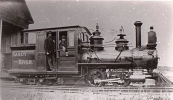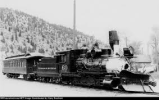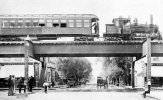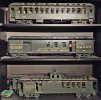JohnSol
Registered
This is the third engine that I've coupled to this coach of ambiguous scale. Coupled to this Bachmann 2-6-0, the scale looks correct. The coach also looked correct when coupled to an LGB Fortney, but under scaled when coupled to an Accucraft C&S 60 2-8-0. The question I have is, were all Jackson & Sharpe passenger cars all the same height? Perhaps cars built in the early 19th century were smaller to accommodate the smaller people of that age. 





